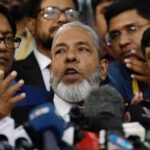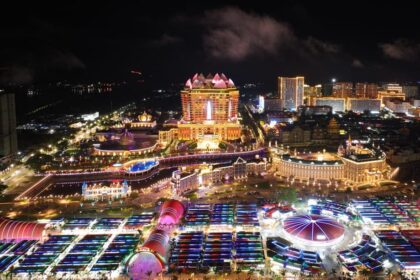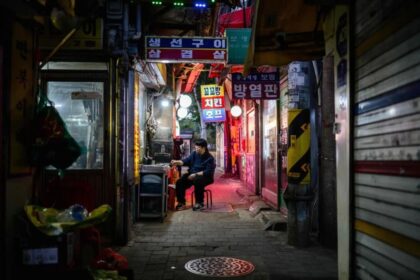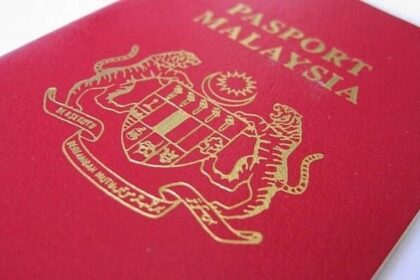A rare Cold War assignment
In 1984, at the height of the Cold War, a Malaysian commercial airline captain stepped into Soviet cockpits for a mission few outside diplomatic and aviation circles knew about. Captain Gurcharan Singh Sidhu, then a senior pilot and a leaders voice in Malaysias pilot community, accepted an invitation to evaluate two of the Soviet Unions key civil aircraft. Over a 12 day visit, he flew the Tupolev Tu 154 and the Ilyushin Il 86 from Aeroflots base with the carriers chief pilots at his side. The program included tours, formal meetings and briefings, and a level of hospitality reserved for state guests.
It was an unusual moment of professional exchange in a tense era. Only a year earlier, global aviation had been shaken by the downing of Korean Air Lines Flight 007 after it strayed into Soviet airspace. Against that backdrop, welcoming a non Soviet airline captain into Soviet jetliners sent a clear signal. The visit was framed as technical, not political. The Soviets wanted a seasoned commercial pilot from outside their system to assess performance, cockpit design, operating procedures and service readiness, and they wanted someone who flew western aircraft every day to give an honest comparison.
Captain Gurcharan, who had spoken for Malaysia at a major international pilots meeting in Dublin the previous year and served as vice president of the Malaysia Airlines Pilots Association, sought and received permission from Malaysias Home Ministry before he traveled. He was told to be careful about optics and very mindful of Cold War sensitivities. He went ahead, took the flights, and emerged with a rare perspective on an aviation world that was often closed to outsiders.
Who is Captain Gurcharan Singh Sidhu
By the time the Soviets called, Gurcharan had built a deep resume. He began his flying career with Malaysia Singapore Airlines in 1971. When that carrier split into Malaysia Airlines and Singapore Airlines in 1972, he moved to Malaysia Airlines and continued to rise through the ranks. He mastered a range of western aircraft, from the rugged Fokker F27 turboprop to long haul widebodies like the Boeing 707, the Airbus A300 B4 and the McDonnell Douglas DC 10.
His peers saw him as a leader. He served in the Malaysia Airlines Pilots Association and later became its president. In 1997, he was seconded to Jet Airways in India as flight operations director, a role that placed him at the heart of airline standards, training and procedures. He later worked with Korean Air and Al Wafeer Airlines in Saudi Arabia, before flying with AirAsia X and retiring in 2013. Over a career that stretched more than four decades, he visited almost every country on the commercial map.
He also had a life outside the cockpit that spoke to discipline and drive. As a teenager he represented Perak in hockey. He won the World Airline Golf Championship in 1991, and in 1994 he received a Datukship from the Perak ruler. He credits his parents for their backing and for the punctuality and focus that shaped his career. He is married to Arunee Dee iam, who once served as a cabin crew member with Korean Air.
Inside the Soviet jets Tu 154 and Il 86
The Tu 154 and Il 86 represented two pillars of Soviet civil aviation in the late 1970s and early 1980s. Both were built to meet the travel needs of a vast country and a state airline that served almost every populated region. For Aeroflot they were workhorses for medium range and trunk routes, designed with Soviet operating environments and standards in mind.
The Tu 154 was a tri engine narrowbody, comparable in size and mission to the Boeing 727. It operated across medium range routes with speed and resilience and was known for taking rougher runways in stride, a feature valuable in parts of the Soviet network. To a western trained pilot, it would present a different set of gauges and cues, and a different philosophy of cockpit roles and systems. Handling and performance were considered strong for the era, and the layout reflected the Soviet norm of a larger cockpit crew that included a flight engineer and often a navigator.
The Il 86 was the first Soviet widebody. It used four engines and was sized for heavy passenger flows between major cities. In broad terms it occupied the same market segment as the McDonnell Douglas DC 10 and the early Airbus A300, although its range and efficiency were tuned for what Aeroflot needed inside the Soviet sphere and on selected international runs. It was a big airplane, robustly built, and fit for mass transport across domestic and regional routes. For western carriers evaluating it at the time, the airplane stood out for its spacious interior and solid ride, but it faced headwinds in global sales because airlines outside the bloc were tied into western supply chains, training and support.
Stepping into these cockpits brought a set of differences that went beyond the instruments. Soviet civil aircraft of that period commonly used metric units for altitude and airspeed. Labels and procedure notes were in Cyrillic. Standard operating procedures reflected crew roles calibrated for three or even four people on the flight deck. A visiting captain needed to quickly reconcile those differences and fly in a way that was both safe and respectful of the host crews training.
Each of his evaluation flights ran for roughly 90 minutes. A profile of that length is enough to cover a detailed start up and taxi, a takeoff, climb and level off, handling checks that explore roll and pitch response, power settings at different altitudes, and work with automation. Depending on design and field conditions, a session might include a circuit to feel the approach and landing, and brief system demonstrations to show how the aircraft manages pressurization, electrical loads and hydraulics. Part of the value is the pilots candid note taking on cockpit ergonomics, visibility, checklists, radio work and how the crew communicates in routine and higher workload moments.
For Soviet designers and airline managers, the insights of a captain who flew the Boeing 707 and DC 10 in daily service were a direct line to the expectations of many international carriers. Feedback on fuel burns, climb rates, speed control, pressurization comfort and noise in the cabin, even the end to end workflow around turnaround times, had practical use back home.
Why the Soviets sought a commercial pilot from Malaysia
Malaysia in the 1980s sat comfortably in the Non Aligned Movement. The country traded and maintained relations with East and West. That balanced posture made a Malaysian captain an attractive choice for a sensitive visit. He represented a respected flag carrier, not a geopolitical rival, and he was viewed as a professional who would judge the aircraft on merit.
The Soviet system was seeking credible, outside perspectives on civil aircraft that were less familiar to non Soviet airlines. Even if broad export sales did not follow for the Il 86 or Tu 154, an evaluation from a western trained pilot could shape cockpit changes and service practices, and it could inform how crews presented the airplanes to foreign audiences at shows and demonstrations.
There was a second factor. Captain Gurcharan flew a suite of western types, from turboprop to long haul widebody, and he carried fresh experience from international pilot forums. His comparison points covered training pipelines, dispatch reliability, maintenance access, crew workload, and passenger experience. That wide view is exactly what a design bureau and a state airline look for when they ask for a rigorous technical opinion.
The previous year had brought a profound tragedy to civil aviation. The loss of KAL 007 over the Sea of Japan led to sweeping changes in navigation oversight and later prompted the United States to make GPS signals available to civilian users. That context underlined the caution and the significance of a visit like this. It also showed why a professional, safety first exchange in a simulator and cockpit, with clear approvals and escorts, was a rare but constructive step during a period of deep mistrust.
Security rules and diplomacy in 1984
Such travel in the Soviet Union did not happen without close coordination. The visit came with an interpreter and a bodyguard, an itinerary fixed well in advance and guided tours of facilities that the hosts chose to highlight. Protocol stood out at every turn. He was received by local governors, moved in a special coach on a train to Leningrad, and stayed in guest housing prepared for official visitors.
Back home, checks were in place too. He had secured permission from Malaysias Home Ministry before the trip and was advised to be cautious about being used for show. He kept the focus on test flying and technical assessments. The hosting crews were professionals, and the work in the cockpit aimed at evaluating procedure and performance rather than politics.
Aeroflot at the time functioned as the state carrier and a symbol of Soviet capability. The airline operated an immense route network and served as the public face of the aircraft built by domestic design bureaus. Inviting a foreign captain into that world for a close look required confidence, and the arrangement suggested that decision makers valued frank, operational feedback.
From Moscow to the Baltic republics
After the test flights in Moscow, the journey continued by train to Leningrad and on to the Baltic republics of Estonia, Latvia and Lithuania. Those regions were tied into Aeroflots network and hosted aviation facilities that supported operations and training. The tours included briefings and visits designed to show aviation as part of a broader industrial and cultural landscape.
The experience left an impression. He described it as marvellous and unforgettable, a contrast to his previous stops in other parts of the world. It was a window into daily life behind the Iron Curtain, seen through the lens of airports, crews and the aircraft that kept the vast country connected.
Enduring lessons from a rare cockpit exchange
At its core, this story shows how professional aviation can bridge divides. Pilots, engineers and controllers share a common language of procedures and checklists. When they step into one anothers aircraft, they compare notes on workload, clarity, redundancy and crew dynamics. The result is a flow of practical ideas that can make operations safer and more efficient, even when manufacturers and regulators come from very different systems.
Demonstration and evaluation flights remain a standard way for manufacturers to validate design choices and persuade airlines. The best of these sessions allow invited pilots to bring an outsiders eye and a candid voice. They test not only speed, climb and range, but also how humans interact with the machine. Cockpit layout, annunciator logic, automation mode awareness and the ease of abnormal checklists matter just as much as engine thrust or wing design when a crew flies long days in busy airspace.
Cooperation in aviation continues to show up in unexpected ways. Malaysia today operates Russian origin Su 30MKM fighters. In recent years, a US KC 135 aerial refueling tanker practiced in flight refueling with Royal Malaysian Air Force Su 30MKM jets at Subang, an exercise enabled by probe and drogue equipment and carried out under a formal partnership program. It was a small but telling example of practical collaboration across different lineages of aircraft and training.
Civil aviation still faces hazards tied to conflict. The downing of Malaysia Airlines Flight MH17 over eastern Ukraine in 2014 and the loss of Ukraine International Airlines Flight PS752 in 2020 showed how quickly air defense activity can threaten civilian flights. More recent incidents in and around conflict zones have again raised concerns about the safety of diversions and incomplete information reaching crews. Investigations continue to shape best practices for route planning and risk assessment near contested areas.
Captain Gurcharans 1984 visit was the opposite of a crisis. It took place in a structured setting, far from any front, and under the watch of experienced Aeroflot captains. He brought the mindset of a line pilot with thousands of hours on western types and delivered the kind of grounded feedback aircraft builders value. Four decades later, that exchange stands as an unusual chapter in Malaysias aviation story and a reminder that even in tense times, the shared craft of flying can make room for professional contact and learning.
Key Points
- In 1984, Malaysian captain Gurcharan Singh Sidhu was invited to Moscow to test fly the Tu 154 and Il 86 with Aeroflot crews.
- He likely became the first Malaysian given that level of access to Soviet civil aviation during the Cold War.
- The 12 day visit included state guest protocol, escorted tours and meetings across Moscow, Leningrad and the Baltic republics.
- He obtained permission from Malaysias Home Ministry, reflecting Cold War sensitivities and diplomatic caution.
- The Soviets sought an experienced non Soviet airline captain who flew western types to provide candid evaluations.
- The Tu 154 and Il 86 formed the backbone of Aeroflots medium range and trunk route operations at the time.
- Gurcharan later held senior roles in India, Korea and Saudi Arabia and retired from AirAsia X in 2013 after a 43 year career.
- His story highlights how technical exchanges in aviation can proceed even amid geopolitical tension.












